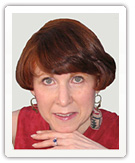e-Tips
How To Achieve Successful Multi-Generational Collaboration
It’s time to revisit how the generations collaborate at work. Collaboration has become the preferred work style, and a large percentage of workplaces are multi-generational.
Ever since computers became standard operating equipment on each person’s desk in the workplace, we have been hearing that the older generations are technophobes who resist working in the way the younger generations do and will not bridge the gap technologically. As time went on and Boomers became more accustomed to technology, the tech gap has become less of an impediment. Of course, the Boomers are not as tech savvy as Gen Y, who never knew a world without computers and increasingly without web 2.0 and more advanced applications. But computer use is a given by all the generations now and will fade away as an obstacle among the members of work teams.
Indeed, the greater divide among generations is attitudinal and behavioral. With awareness, understanding, willingness and facilitation, the divides can be bridged to produce harmonious collaboration.
One way the four generations* we encounter today in the workplace, to generalize, tend to think differently is about how collaboration happens. The oldest generation, the Traditionalists, have a hierarchical mentality. The Baby Boomers like to collaborate in person at meetings, brainstorming with all hands available until the project is completed. Generation Xers are more autonomous and goal-oriented, and each individual prefers a specific role they can handle as they wish. They prefer to minimize time for in-person meetings and collaborate with group software. Collaboration is a signature attribute of Generation Y/Millennials. Sharing is second nature, but they want to be sure they are recognized individually. They expect to collaborate technologically even when at in-person meetings and often supply their own tech devices and applications if not provided for them. Contrary to stereotype, many Gen Yers like meeting in person.
In times of economic stress, these differences are often magnified, so articulating expectations and getting buy-in to the what and the how are even more important.
While these differences in approaches are clearly a challenge for a team leader, the divides can be bridged if there are similarities in values and upfront agreement on goals. Diversity in contribution and method to achieve goals if managed sensitively can be the bonus (gift) of creative collaboration.
It is facilitated dialogue among the people who actually work together in internal teams, marketing teams or with clients that fosters collaboration and achieves lasting change.
Some of the LESSONS LEARNED from my experiences facilitating multi-generational team dialogues are:
- The manager or team leader needs to be supported.
- Start with defining common goals for which each team member sees personal value.
- Clarify upfront expectations and appropriate roles to promote engagement and cooperation.
- Open lines of communication break down hidden resentments.
- People need to understand how what they are asked to do fits into the big picture.
- Everyone wants and needs respectful feedback and opportunities and support for growth.
Negative emotions hinder productivity, and positive emotions and attitudes are the foundation for increasing productivity and high quality work people are proud of.
Please share your experiences – positive and negative – relating to multi-generational collaboration. Continue to send your thoughts, comments and stories my way to pwhaserot@pdcounsel.com or post on the Cross-Generational Conversation group on LinkedIn.
Phyllis
© Phyllis Weiss Haserot, 2014. All rights reserved.
* The generational chronology for easy reference: Generations are defined by the similar formative influences – social, cultural, political, economic – that existed as the individuals of particular birth cohorts were growing up. Given that premise, the age breakdowns for each of the four generations currently in the workplace are approximately:
Traditionalists: born 1925-1942
Baby Boomers born 1943-1962
Generation X born 1963-1978
Generation Y/Millennials born 1979-1998
For coaching, training and special programs on inter-generational challenges for and among 4 generations in the workplace, attracting and retaining clients and employees of different generations, and maximizing the potential of young professionals and work teams, call or email Phyllis for an exploratory talk or complimentary coaching session at 212-593-1549 or pwhaserot@pdcounsel.com. Ask about our signature program *Frontrunner 5.”
Phyllis is available to speak at your organization or at firm retreats on inter-generational relations and organizational effectiveness topics. Call or e-mail for a list of topics or to custom-tailor your own.
